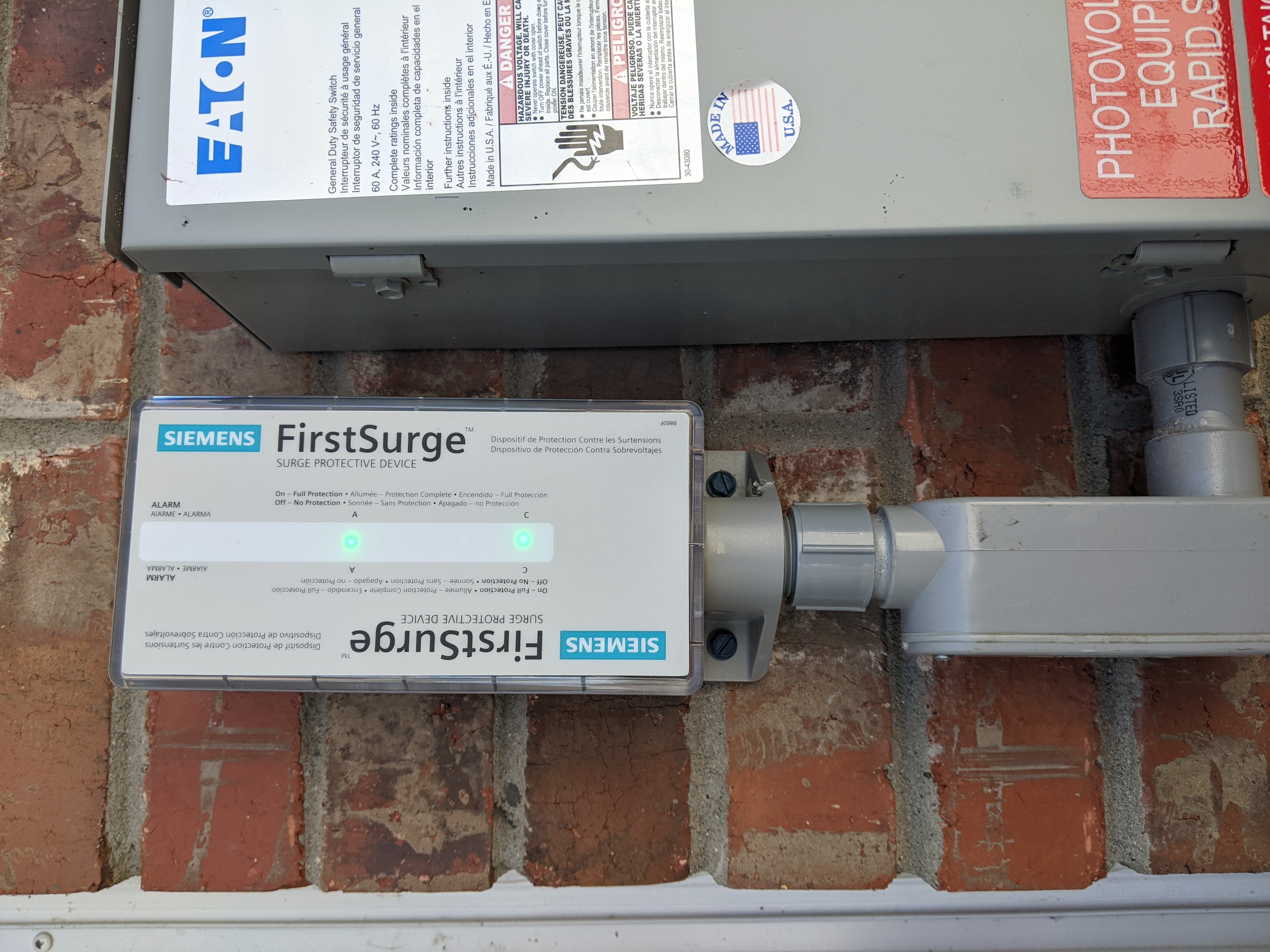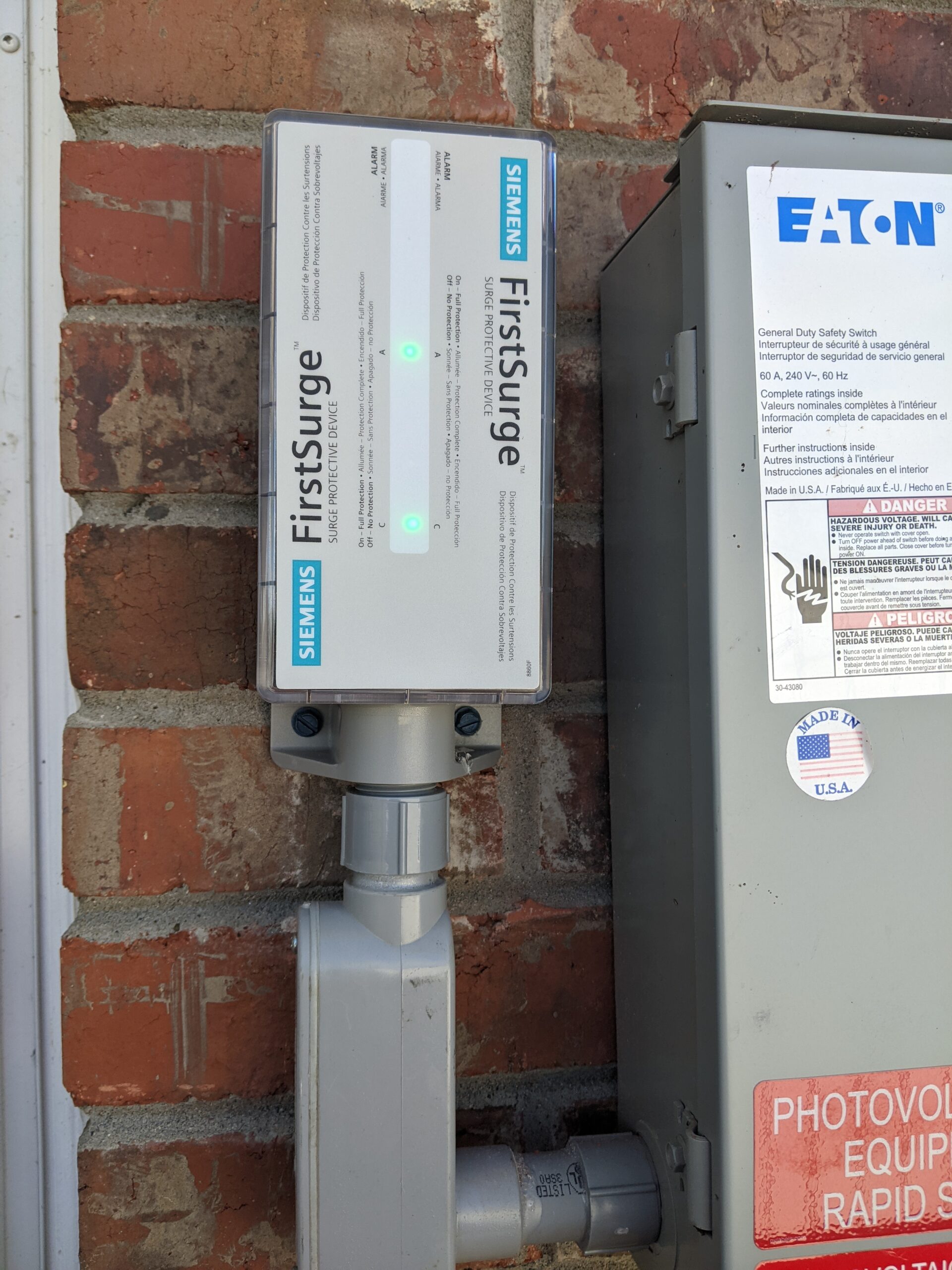This past week I installed a new feature into my house, an fs140 whole house surge protector. Whole house surge protectors, otherwise known as Type 2 SPDs (Surge Protection Devices) do exactly what they sound like — they protect your entire home’s electrical system and loads (devices plugged in) from power surges coming from the grid and those caused by devices inside the house turning on and off; toaster ovens turning on and off, for example. Besides the obvious protection we’re all familiar with when thinking about power surges, this protection will extend the life of the sensitive electronic devices that are the beating heart of our modern lives.

So why did I choose the Siemens FS140?
Ultimately I chose the Siemens FS140 because it’s the best in class. It was a little on the pricy side, running about $300 as of October 2021 but when it comes to things that are going to be permanently wired into my home’s electrical system for the lifetime of the house I don’t mind spending a little more money to get a better product. The other whole house surge protectors that I looked at offered lesser protection and in this situation I would rather just spend an extra hundred bucks and get the highest level of protection possible.
I picked the FS140 because it provides protection against upto 140,000 Amps per phase. There are other, lesser, whole house surge protectors even in the Siemens line-up like the FS100 and FS60…but again, if you’re going to hardwire something into your house then it only makes sense to spend a little extra for the highest level of protection possible.
I also like that the Siemens FS140 has both audio and visual notifications alerting you when it needs to be replaced. As long as you see those green LEDs glowing then you know it’s working. When it’s absorbed enough surges to finally wear out then the green LEDs disappear and it starts beeping and red LEDs light up in places of the green ones.
How I installed the FS140?
My home’s electrical system is a little different than normal because I run solar power in addition to grid power. Despite that, the FS140 was relatively easy to install. The FS140 is wired into a circuit breaker in my main breaker box and that’s really all their is to it from an electrical standpoint. Physically speaking, the FS140 is huge. At about 10 inches long and 3 inches wide the enclosure would not fit inside my breaker.
Since I didn’t have space to mount the unit inside my box, I chose to mount it on the exterior of my house. Conveniently, my box is mounted on a north facing wall which means I could easily mount the FS140 on the north side without running a lot of conduit.
My preference is to mount things like this on the north side of a building whenever possible because it protects them from sunlight. This is basically the same idea as having your solar panels or garden south-facing so they get maximum sunlight. It’s not strictly a requirement that the FS140 be mounted like this because it does have a very good outdoor enclosure but a little extra care never hurts.
The included instructions are comprehensive and easy to follow but as with all things electrical — especially things that can burn your house down if you do them incorrectly — hire an electrician to do a professional installation if you aren’t comfortable working with electricity or if you aren’t familiar with local codes. The $200 you pay an electrician to do the job correctly is a lot cheaper than losing everything when your house burns down.
Am I happy with my purchase?
Overall, yes. It’s not one of those things that’s going to draw a lot of attention or give you bragging rights but I can see a difference when I’m running my ham radio and other people are toodling around the house. The power’s definitely cleaner with the FS140 installed. The other thing I’ve noticed, and this might be something to consider if you’re doing an outdoor mounting, is that the green LEDs are extremely bright and noticeable. If you’re concerned with landscaping or the curb appeal of your house I would avoid mounting this where it’s visible outside.
